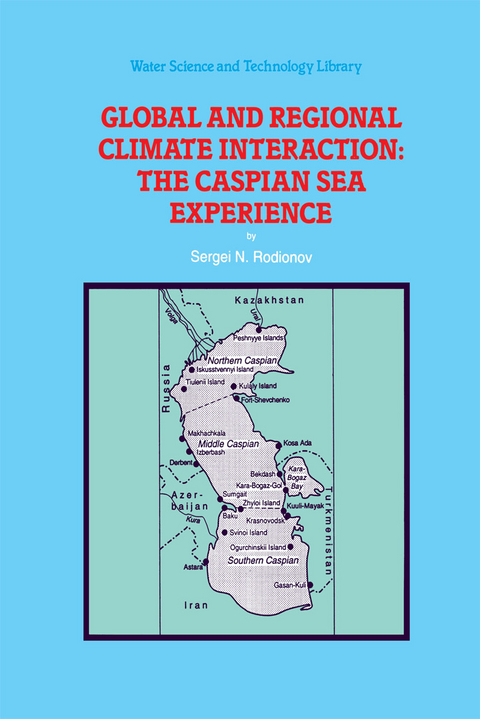
Global and Regional Climate Interaction: The Caspian Sea Experience
Springer (Verlag)
978-0-7923-2784-4 (ISBN)
The Caspian Sea is the world's largest inland body of water both in area and volume. Its drainage area is approximately 3. 5 million square kilometers, extending 2500 km in length, 35°N to 600N, and on average 1000 km wide, 400E 0 to 60E (Fig. 1). Located in a large continental depression about 27 m below sea level and with no surface outlets, the Caspian Sea is particularly sensitive to climatic variations. As with other closed-basin lakes, its level depends on the balance between precipitation and evaporation, which is directly linked to atmospheric circulation. Because of its large area and volume of water, the Caspian Sea effectively. filters climatic noise, and as such may serve as a good indicator of climatic changes through observed changes in its water level. Recently, the Caspian Sea has come under increased attention from physical and social scientists owing to its unique natural characteristics as well as the' very important role it plays in the ecoriomil:!s of such countries as Azerbaijan" Russia, Kazakhstan, Turkmenistan and Iran. Dissolution of the Soviet Union and creation of new independent states resulted in difficult negotiations to divide the wealth of the Caspian Sea and to establish new economic zones. According to one assessment (Ratkovich, 1988), the Caspian Sea basin accounted for about one-third of the total economic output, one-fifth of the agricultural production, and one-third of the hydroelectric production of the former Soviet Union.
1 Introduction.- 2 Seasonal and Longer-Term Changes of Climatic Characteristics in the Caspian Sea Basin.- 2.1 General climate characteristics.- 2.2 Long-term changes in the seasonal cycle.- 2.3 Interannual and longer-term changes.- 2.4 Temporal changes in the frequency structure.- 3 The Caspian Sea and Climatic Processes in the Northern Hemisphere.- 3.1 Teleconnections.- 3.2 Atmospheric circulation patterns during a rise and decline in the CSL.- 3.3 The role of the North Atlantic.- 3.4 The extraordinary rise in the CSL after 1977.- 3.5 Climate and CSL changes during the past millennium.- 4 Forecasting the Caspian Sea Level.- 4.1 Causes of the CSL fluctuations.- 4.2 Comparative analysis of ‘climatological’ methods.- 4.3 Instability of correlation relationships.- 4.4 An approach based on probabilistic logic.- 4.5 Experimental results.- 5 Caspian Sea Level and Anticipated Global Warming.- 5.1 Global climate modelling.- 5.2 Paleoclimate analogues.- 5.3 Climate of the 1980s and early 1990s.- Concluding Remarks.- Appendix Fortran-Program for Constructing a Linkage Tree.- References.
| Erscheint lt. Verlag | 30.4.1994 |
|---|---|
| Reihe/Serie | Water Science and Technology Library ; 11 |
| Zusatzinfo | VII, 243 p. |
| Verlagsort | Dordrecht |
| Sprache | englisch |
| Maße | 170 x 244 mm |
| Themenwelt | Mathematik / Informatik ► Mathematik |
| Naturwissenschaften ► Biologie ► Ökologie / Naturschutz | |
| Naturwissenschaften ► Geowissenschaften ► Geologie | |
| Naturwissenschaften ► Geowissenschaften ► Hydrologie / Ozeanografie | |
| Naturwissenschaften ► Geowissenschaften ► Meteorologie / Klimatologie | |
| ISBN-10 | 0-7923-2784-5 / 0792327845 |
| ISBN-13 | 978-0-7923-2784-4 / 9780792327844 |
| Zustand | Neuware |
| Haben Sie eine Frage zum Produkt? |
aus dem Bereich


